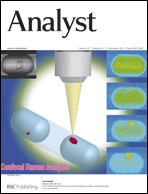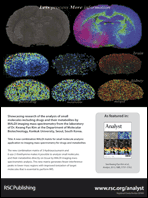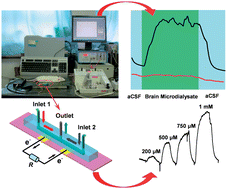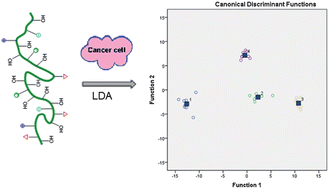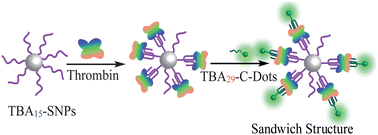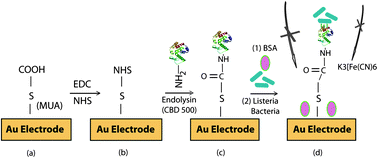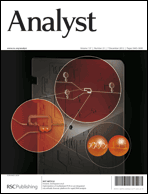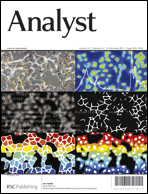 As well as our two front covers, we have a number of additional HOT papers in this issue of Analyst. Take a look at some of the hot science that we have published in this latest issue.
As well as our two front covers, we have a number of additional HOT papers in this issue of Analyst. Take a look at some of the hot science that we have published in this latest issue.
These papers will be free to read until Nov 30th.
Highlighting a need to distinguish cell cycle signatures from cellular responses to chemotherapeutics in SR-FTIR spectroscopy
C. Hughes, M. D. Brown, F. J. Ball, G. Monjardez, N. W. Clarke, K. R. Flower and P. Gardner
Analyst, 2012, 137, 5736-5742
DOI: 10.1039/C2AN35633C
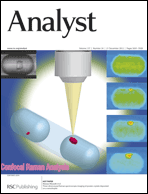 A simplified electrospray ionization source based on electrostatic field induction for mass spectrometric analysis of droplet samples
A simplified electrospray ionization source based on electrostatic field induction for mass spectrometric analysis of droplet samples
Xiaohui Lu, Hong Chen, Xiang Li, Jianmin Chen and Xin Yang
Analyst, 2012, 137, 5743-5748
DOI: 10.1039/C2AN35909J
A bacteriophage endolysin-based electrochemical impedance biosensor for the rapid detection of Listeria cells
Mona Tolba, Minhaz Uddin Ahmed, Chaker Tlili, Fritz Eichenseher, Martin J. Loessner and Mohammed Zourob
Analyst, 2012, 137, 5749-5756
DOI: 10.1039/C2AN35988J
In situ noninvasive Raman microspectroscopic investigation of polychrome plasterworks in the Alhambra
Ana Dominguez-Vidal, Maria Jose de la Torre-Lopez, Ramon Rubio-Domene and Maria Jose Ayora-Cañada
Analyst, 2012, 137, 5763-5769
DOI: 10.1039/C2AN36027F












